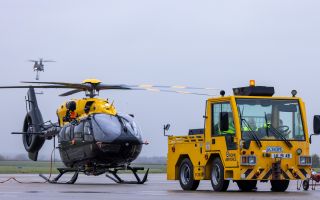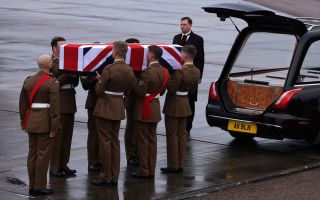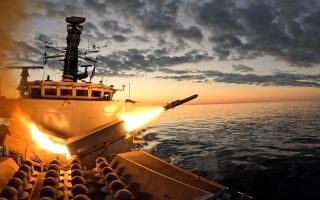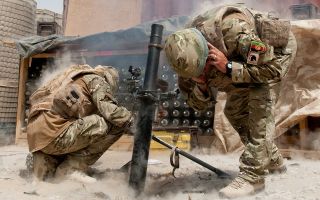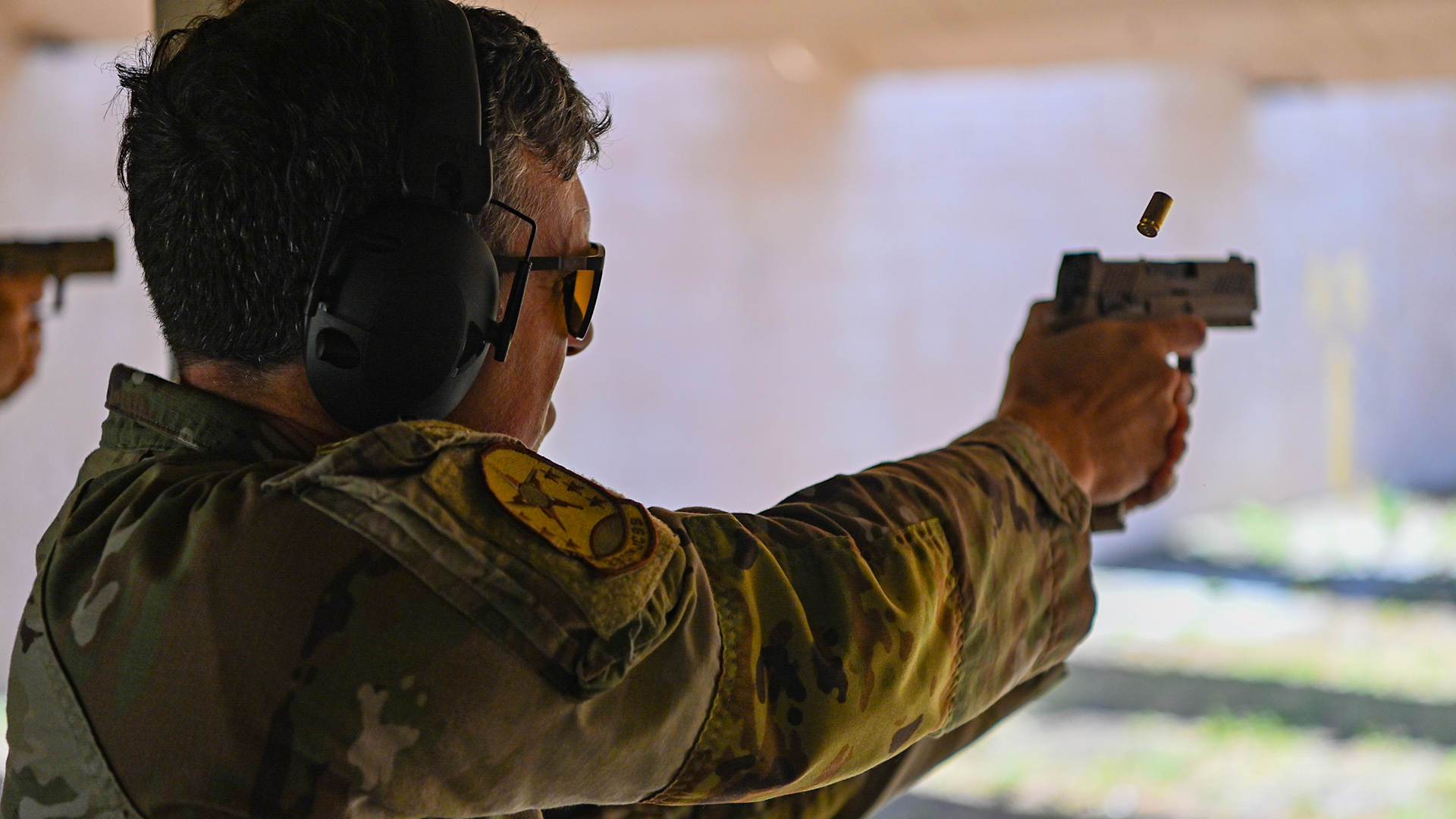
Sig Sauer M18: Facts behind handgun blamed for fatal shooting of US airman

The fatal shooting of a US airman has prompted Global Strike Command, which controls the US Air Force's bomber and missile forces, to suspended the use of the M18 service pistol.
The victim was killed at the Francis E Warren Air Force Base in Wyoming, home to the 90th Missile Wing, after a shot was fired on July 20.
Unconfirmed reports suggest the weapon discharged without the trigger being pulled.
What is the M18?
The Sig Sauer M17 and M18 are military variants of the company's P320 civilian handgun.
The two sidearms are in use across all the US armed forces, except the US Coast Guard.
The US Army opted mainly for the M17, which is deemed a "full size" weapon, having a barrel length of 120mm.
Meanwhile, the US Air Force, US Navy and US Marine Corps chose the smaller M18 - which is referred to as a "carry size" gun, having a shorter 98mm barrel.
The M17 and M18 variously replaced the Beretta M9, the M45A1 - a variant of the venerable M1911 - and the M007, the USMC's name for the Glock 19M.
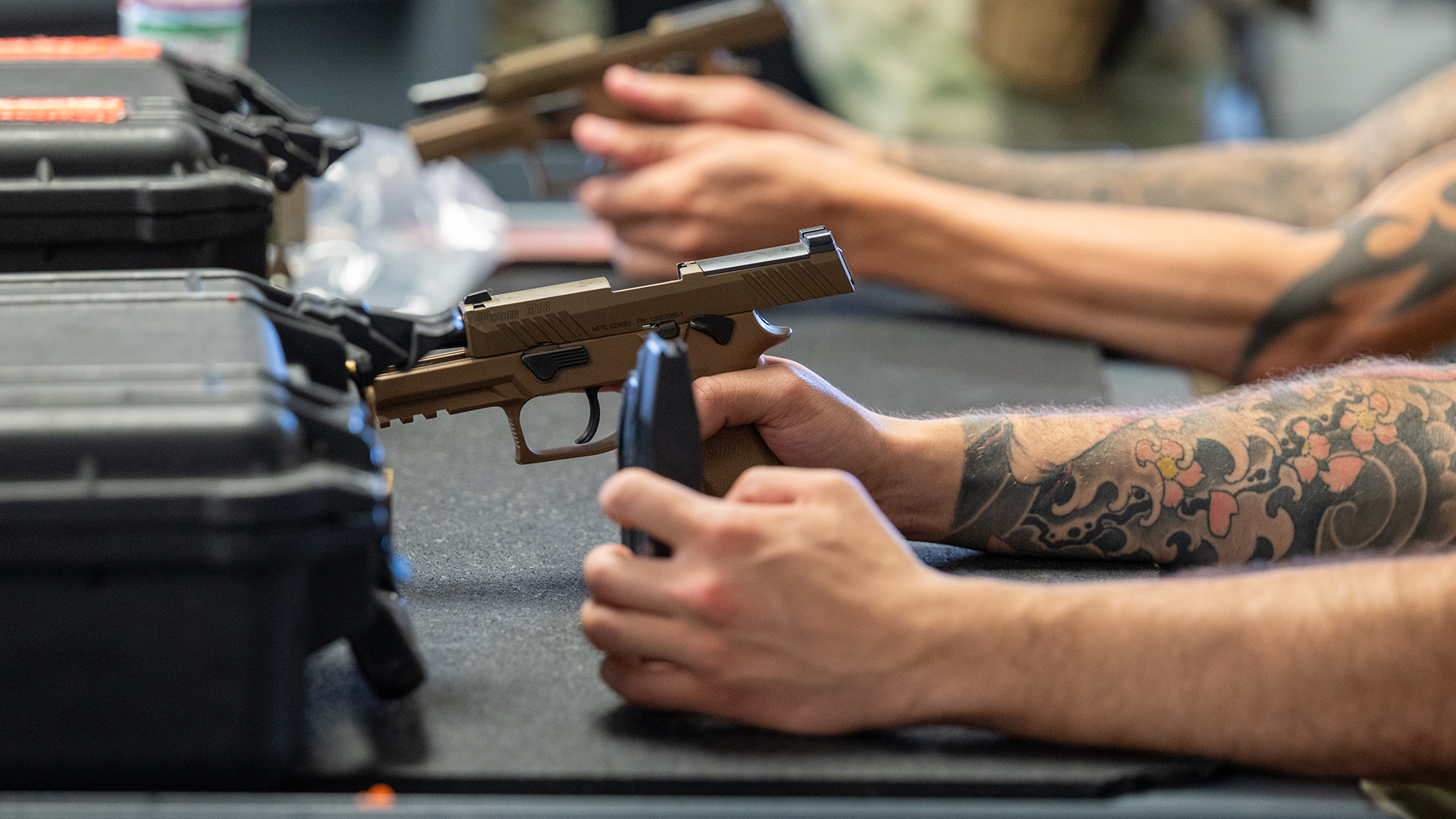
What round does it fire?
The M18 is chambered to take only one cartridge - the Nato standard version of 9mm Parabellum.
This round was designed by Georg Luger back in 1901, standardised by Nato in the 1950s, but not adopted by the US military until the 1980s.
However, there is no Nato standardisation of the type of bullet fired, so this can vary from manufacturer to manufacturer.
The armed forces, unlike law enforcement, are not permitted to use expanding ammunition.
Instead, the M18 fires a full metal jacket round - a lead core shrouded in copper, allowing for a higher velocity without fouling the bore.
Two sizes of magazine are available, the standard one holding 17 rounds, while the larger takes 21.
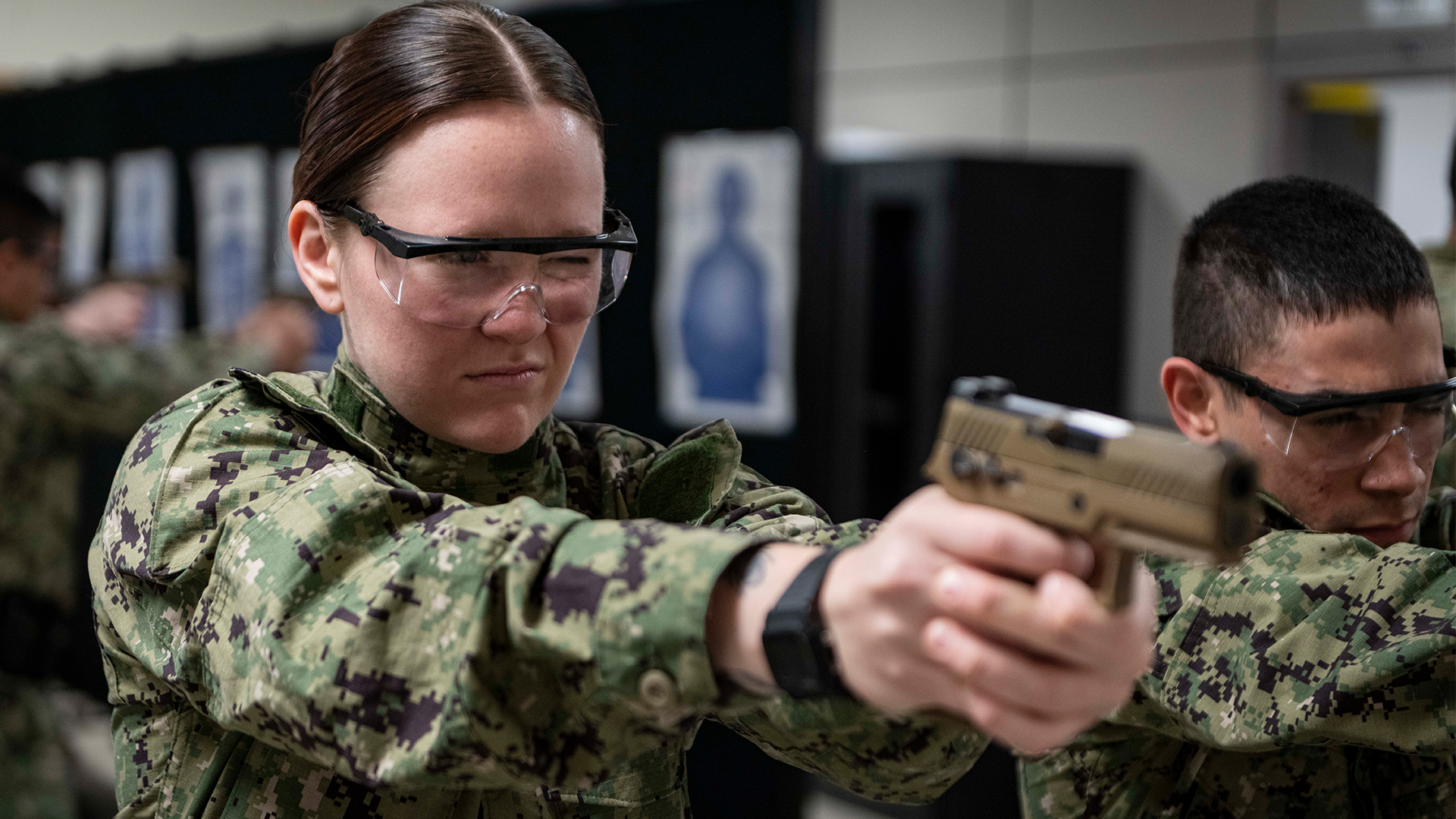
What are its features?
While it is available in black, the vast majority of M18s are finished in a colour called coyote tan.
The external metal parts are treated to a durable coating called PVD, while the polymer grip and frame are moulded in coyote tan.
The weapon has a thumb-operated safety catch that blocks the movement of the trigger blade.
Unlike some previous military sidearms, the M18 is capable of being fitted with optics and accessories.
A reflex sight, commonly called a red dot sight, makes it easier to acquire a target than the standard notch-and-post sight.
This also allows the weapon to be shot with both eyes open, providing greater peripheral vision and situational awareness.
A short section of Picatinny rail in front of the trigger guard allows either a torch or laser to be fitted.
Safety concerns
The circumstances of the fatal US Air Force accident are not yet clear, and a full investigation is ongoing.
The suspension of the M18 is so far limited to Global Strike Command; no other services have announced plans to halt use of the sidearm.
The civilian variant of Sig Sauer's M18, the P320, has been linked to multiple allegations of unintentional discharge.
At least one US police department has suspended its use amid concerns that the gun could inadvertently fire if dropped.

